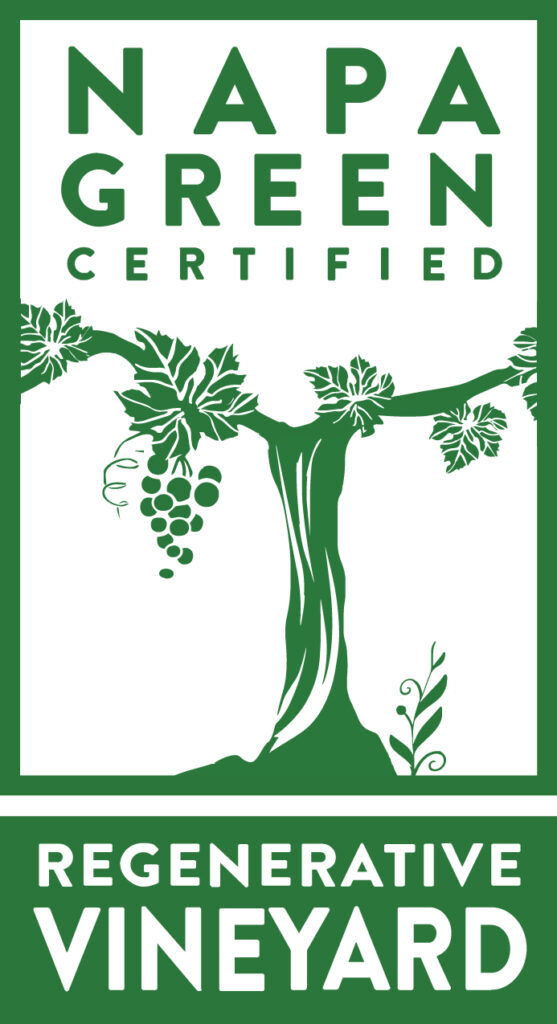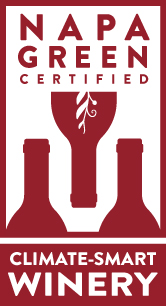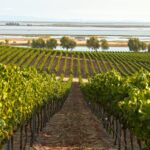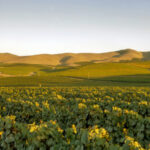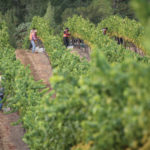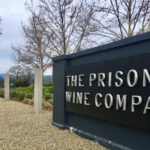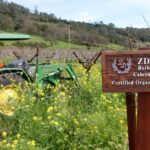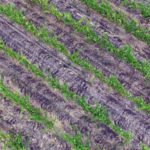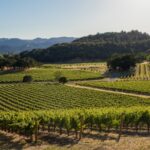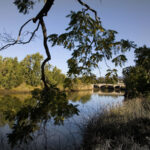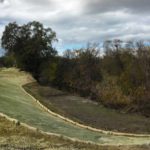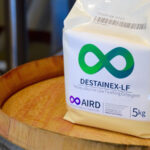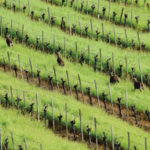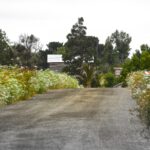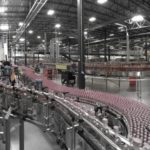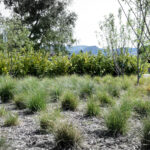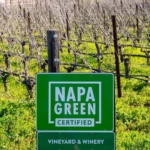Collective Impact Continues to Grow Thanks to Local Leaders
-
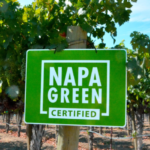 Napa Green | Champion Story
Napa Green | Champion Story
- |
- Regenerative Ag & Climate Action
Napa Green has a new milestone – the program is now 21 years old! This is an auspicious number and we want to celebrate and thank the community leaders who joined in from the beginning, and who have continued along the path of sustainability and climate action. The Napa Green Land program launched in 2004, and the complementary Napa Green Winery program launched in 2008, prompting Yvon Chouinard, founder of Patagonia, who spoke at the launch event, to observe, “I’ve been at this for 30 years and this is the best, most well-thought-out program I’ve ever seen.”
The Napa Valley Vintners (NVV) stewarded Napa Green for its first fifteen years, and it is thanks to their vision and the leadership of these key founding members that Napa Green is still here to support growers and vintners in being the change in our community and industry.
Today we spotlight those leaders that joined the Napa Green Land program in the early years, from 2004-2008, committing to restore watershed health and prevent erosion. These same leaders then took the baton and transitioned to the new regenerative Napa Green Vineyard Certification, which launched in 2021. Here are just a few examples of how these members continue to build soil health, biodiversity, team engagement, vineyard resilience, and make the highest quality wines:

- Beaulieu Vineyards: With soil health in mind, Beaulieu Vineyards studies how compost application, low- and no-till farming, and biochar application increase nutrient and water retention, carbon sequestration, and mitigate soil erosion.
- Beringer Vineyards: Beringer Vineyards believes in producing wines with minimal intervention and impact on the natural environment, including conserving and reusing water as much as possible.
- Bouchaine Vineyards: A myriad of life is visible in the Bouchaine Vineyards. Their Integrated Pest Management consists of bird boxes and raptor perches in and around the vineyards, attracting bluebirds that eat unwanted insects, and owls and hawks that keep rodents like voles and gophers in check.
- Opus One WInery: Opus One was the first member to become Napa Green Vineyard certified under the new standards, and they are a Gold Level member as they are also organic. Their regenerative management practices include grazing, conservation tillage, and diverse cover cropping. These efforts aim to maintain soil health, enhance water retention, sequester atmospheric carbon, and foster biodiversity.
- Spottswoode Winery: Spotswoode is not only Napa Green Vineyard & Winery Certified, but Organic, Biodynamic, and B Corp as well, showing a commitment to taking a whole system approach to regenerative farming and sustainable, climate smart winemaking.
- St. Supéry Estate Vineyards & Winery: According to carbon sequestration estimates for St. Supéry, both vineyard properties sequester +1400 metric tons/year, through implementing diverse cover crops, applying compost, low- and no-till, and other soil health and biodiversity practices.
- Stags’ Leap Winery: At Stags’ Leap, their commitment to proactive management extends beyond the vineyard to fire risk reduction. Sheep work both within and around the vineyard, creating a firebreak by grazing on dry, overgrown vegetation, and simultaneously increasing soil health and moisture retention, as the sheep provide natural fertilizer as they work.
- Sterling Vineyards: In addition to being 100% powered by renewable energy, Sterling Vineyards promotes sustainable farming practices and encourages biodiversity, such as planting cover crops and creating habitats for beneficial insects.
- Trefethen Vineyards: As a part of Napa Green Vineyard, Trefethen has committed to reduce farming emissions, including reduced tractor passes and fuel use, and increased underground sequestration by planting vigorous cover crops that grow throughout the winter season.
- V. Sattui Winery: V. Sattui’s is both Napa Green Vineyard and organic, and they gainfully employ llamas to protect the sheep that serve as natural mowers and fertilizers in the vineyard.
How it started…
In the early 2000s, the Napa River was declared by the EPA as impaired. In response, the NVV, in collaboration with more than 30 local environmental, community, and regulatory stakeholders, developed the Napa Green Land (NGL) program (est. 2004) with the goals to prevent erosion and improve the overall health of the Napa River watershed. Over time, these leading practices, facilitated by Fish Friendly Farming or the Napa RCD’s LandSmart program, were voluntarily implemented by forward thinking industry leaders.
In 2017, the San Francisco Bay Regional Water Board adopted vineyard Waste Discharge Requirements (WDR), making these land management and erosion control practices a regulatory requirement for vineyards >5 acres. Thanks to the broad adoption and success of these standards, the health of the Napa River watershed continues to improve and beavers and other wildlife have returned to the river and its tributaries.
How it’s going…
All things must grow and evolve. For over 16 years the original Napa Green Land program played a critical role in preventing erosion, improving the health of our watershed, and helping the Napa River begin to rebound. In 2020, what were long leading practices became a standard for being a good land manager. In 2021, Napa Green announced its new, next-level Napa Green Vineyard standards, focused on the critical issues of today and tomorrow – regenerative farming, climate action, and social stewardship. The new vineyard standards were designed by experts to provide a science-based climate action framework and regenerative roadmap custom-designed for viticulture. The standards include regenerative social practices, and plans for continuing improvement.
As part of the Napa Green Vineyard certification each member receives a customized Carbon Farm Plan that outlines opportunities to enhance soil health, increase biodiversity, create a more resilient agroecosystem, and drawdown carbon. Vineyards also receive an Irrigation Distribution Uniformity assessment, which helps members improve irrigation efficiency and performance. Members baseline and track soil health, water, energy, and fertilizer use, Scope 1 & 2 emissions, and carbon sequestration.
Shout out!
A huge thank you to the first cohort of Napa Green Land Certified (NGL) members, who paved the path for the leading practices and, without whom, the Napa Green Vineyard (NGV) program could not have evolved: Araujo Estate Wines, Beaulieu Vineyards, Beringer Vineyards, Boeschen Vineyards, Bouchaine Vineyards, Cain Vineyard and Winery, Cakebread Cellars, Charles Krug Winery, Clark-Claudon Vineyards, Clos Pegase Winery, Cuvaison Estate Wines, Duckhorn Wine Company, Eagle Eye Wines, Etude Wines, Frog’s Leap Winery, Hagafen Cellars, Hall Wines, Heitz Wine Cellars, Jericho Canyon Vineyard, Joseph Phelps Vineyards, Merryvale, Napa Valley Reserve, Nord Vineyards, Opus One Winery, Parry Cellars, Quintessa, Robert Mondavi Winery, Robert Sinskey Vineyards, Saintsbury, Schramsberg Estate Vineyards & Winery, Silverado Vineyards, Spottswoode Estate Vineyard and Winery, St. Supery Vineyards, Stags’ Leap Vineyard, Sterling Vineyards, Stony Hill Vineyard, Sutter Home Winery, Trefethen Vineyards, V. Sattui Vineyards, Volker Eisele Estate.
About napa green
Napa Green is a global leader in sustainable winegrowing, setting the highest bar for sustainability and climate action in the wine industry. Napa Green facilitates systematic soil to bottle certification for wineries and vineyards, and provides the resources, tools and connections to continuously level up leadership. In 2021, Napa Green was the first sustainable winegrowing program in the world to redevelop Vineyard certification standards to focus on climate action, regenerative carbon farming, and social equity. In 2022, Napa Green and community partners launched the first of its kind, six-event RISE Climate & Wine Symposium (formerly THRIVES) with over 65 leading speakers and 40 “Sustainable Services & Solutions” partners and sponsors.
more climate smart musings
